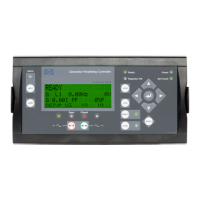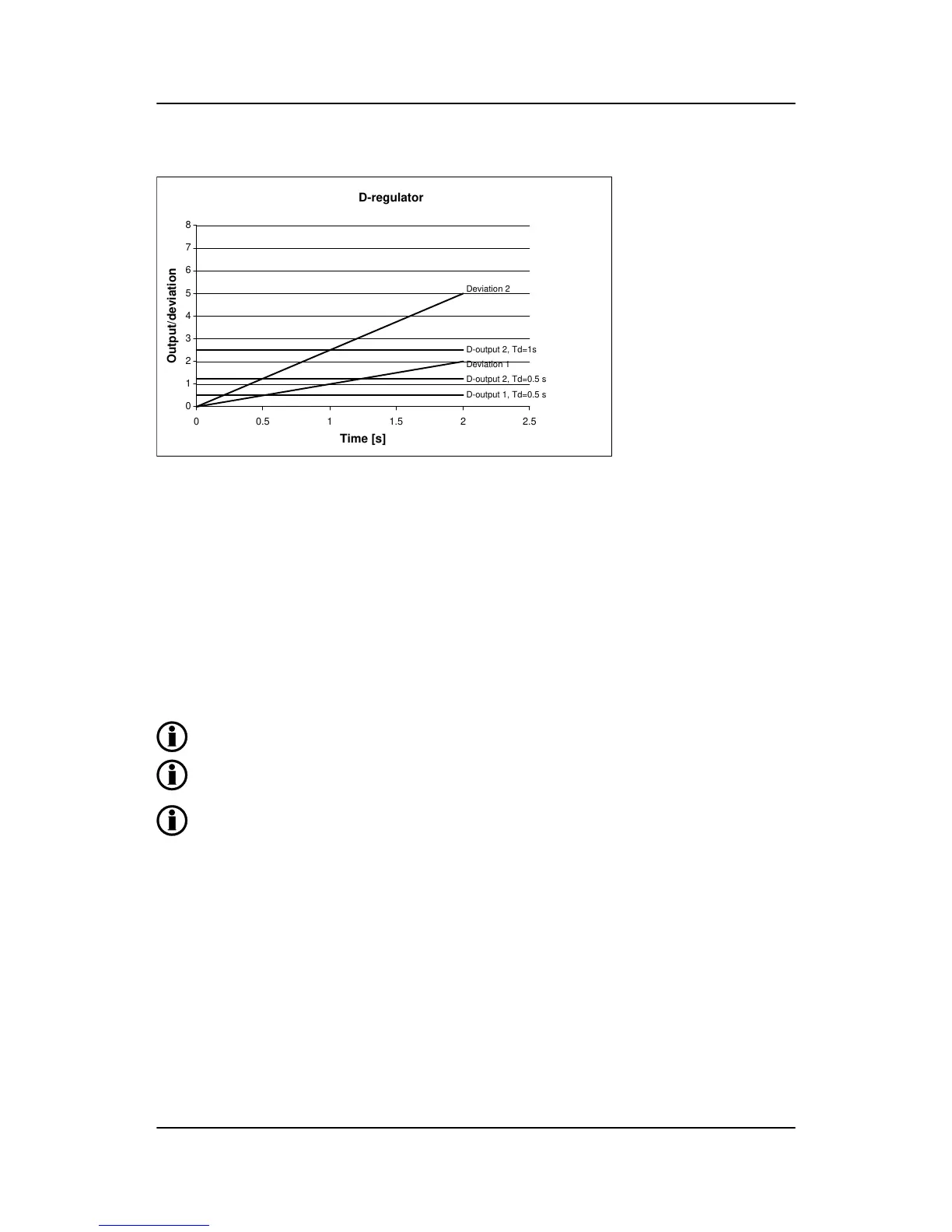Deviation 1: A deviation with a slope of 1.
Deviation 2: A deviation with a slope of 2.5 (2.5 times bigger than deviation 1).
D-output 1, Td=0.5 s: Output from the D-regulator when Td=0.5 s and the deviation is according to Devia-
tion 1.
D-output 2, Td=0.5 s: Output from the D-regulator when Td=0.5 s and the deviation is according to Devia-
tion 2.
D-output 2, Td=1 s: Output from the D-regulator when Td=1 s and the deviation is according to Devia-
tion 2.
The example shows that the bigger deviation and the higher Td setting, the bigger output from the D-regula-
tor. Since the D-regulator is responding to the slope of the deviation, it also means that when there is no
change, the D-output will be zero.
When commissioning, keep in mind that the Kp setting has influence on the D-regulator output.
If the Td is adjusted to 0 s, the D-regulator is switched OFF.
The differential action time, Td, must not be too high. This will make the regulation hunt, simi-
lar to a too high proportional action factor, Kp.
GPC-3 DRH 4189340587 UK PID controller
DEIF A/S Page 107 of 122

